-
Temperature
15-30°C -
Rainfall
600-650mm -
Sowing Temperature
25-30°C -
Harvesting Temperature
15-20°C
Agriculture
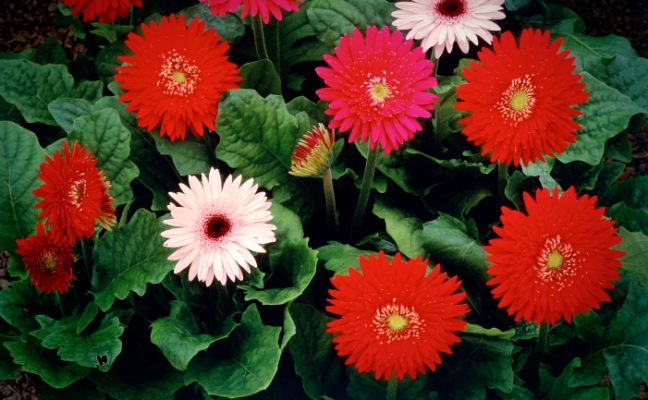
Fertilizer
At the time of land preparation, add FYM@20kg/m2. Add fertilizer dose of Nitrogen@20gm/ m2, phosphorus@20gm/m2 and potash@20gm/ m2 and mix well in the soil before seedling plantation. After flower development spray of 2kg@ N:P:K@13:00:45 mixing in 150 ltr water per acre.
-
Temperature
15-30°C -
Rainfall
600-650mm -
Sowing Temperature
25-30°C -
Harvesting Temperature
15-20°C
- Disease and their control;
Alternaria spots: By this disease light brown color spots are seen on the upper surface of the leaves which become dark brown in color on later stages.
To control this disease, 2gm/ltr of Indofil M-45 @0.2% is given.
Soil
Light soil having good drainage system is suitable for gerbera plantation. Red lateritic soils are best for the cultivation of Gerbera. 5.0-7.2 pH range is suitable for gerbera plantation.
Cercospora spots: By this disease brown color spots are seen on the upper surface of the leaves which become black in color on later stages.
To control this disease, spraying of Benlate @0.1%or 2gm/ltr of Indofil M-45 @0.2% is given.
Irrigation
Open irrigation is required after sometime to Gerbera crop. In summers, irrigation is given at the interval of 5 days and in winters, irrigation is given at the interval of 10 days. Do not moist the land too much as it will cause diseases.
Weed Control
Weeding is necessary in Gerbera cultivation. For first 3 months of plantation, weeding is done once in every 2 weeks and after 3 months of plantation, weeding is done at the interval of 30 days.
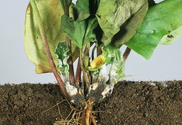
Root rot: It is a common disease found in Gerbera plant.
To control this disease, RidomilMZ@0.2% or 2gm/ltr of Thiram @0.3% mixed with soil.
Popular Varieties With Their Yield
Red coloured: Salvadore, Amlet, Rainy, Julia, Loraito, Natasha, Sonata.
White coloured: Top Model, Damblanki, Dalma, Jambla, Balance.
Pink coloured: Lauriyana, Ariyana, Murail, Pink Elegance, Rosalin.
Orange coloured: Elite, Kailiyan, Marinila Solaria.
Yellow coloured: Teqla, Pasto, Solido, Laurence, Pitan, Dana Ellen.
Bicoloured: Maxima, Figaro.
Other state varieties:
Hybrid varieties:
Red coloured: Fredorella, Vesta, Red Impulse, Shania, Dusty, Ruby Red, Tamara and Salvadore.
Yellow coloured: Fredking, Gold spot, Horaizen, Talasaa, Panama, Nadja, Supernova, Mammut, Uranus and Full moon.
Orange coloured: Orange Classic, Goliath, Carrera, Marasol and Kozak.
Rose coloured: Salvadore and Rosalin.
Cream coloured: Winter Queen, Snow Flake, Dalma and Farida.
Pink coloured: Valentine, Marmara, Pink Elegance, Terraqueen and Esmara.
White coloured: White Maria and Delphi.
Purple coloured: Blackjack and Treasure.
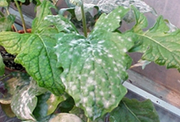
Powdery mildew: Patchy, White powdery growth appears on lower side of leaves. It parasitizes the plant using it as a food source. It commonly occurs on older leaves but it can develop at any stage of crop development. In severe infestation it causes defoliation.
To control this disease, spraying of Benlate @0.1% or Sulfex @0.05% is given.
Plant protection
- Pest and their control:
Aphids: They suck sap from leaves and causing yellowing of leaves. They secrete honey dew like substance and black sooty mould is developed on affected areas.
If infestation is observed, spraying of 0.1% Rogor 40 EC@2ml/ltr or Metasystox 25 EC is done after every 15 days.
General Information
Gerbera is also known as “Transwal Daisy” or “African Daisy”. It is an ornamental flowering plant. It belongs to compositae family. Maharashtra, Uttaranchal, Arunachal Pradesh, Punjab, Uttar Pradesh, West Bengal, Orissa, Karnataka and Gujarat are the major Gerbera cut flowers growing states in India. In Punjab, gerbera farming is mainly done in polyhouse.
Land Preparation
For gerbera farming, it requires well prepared land. To bring the soil to fine tilth, do 2-3 ploughings before planting. Prepare the raised beds of 15cm height and 1.2m width.
Stem rot: This disease mainly affects the lower surface of plant. The disease is mainly caused by some fungus. The disease mainly spread in higher moisture level areas.
To control this disease, RidomilMZ@0.2% or 2gm/ltr of Thiram @0.2% in mixed with soil.
Sowing
Time of sowing:
Gerbera plantation is done in the month of January to March and June to August.
Spacing:
Use line sowing of 37.5cm and plant spacing of 30cm.
Method of sowing:
• Tissue culture method
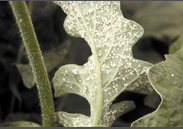
Whitefly: If infestation is observed, spraying of 2ml/ltr Rogor 40 EC 0.1% or Metasystox 25 EC is done after every 15 days.
Harvesting
After 3 months of planting, Gerbera start’s flowering. Harvesting of single type variety is done when 2-3 whorls of stamens are developed and double type variety is done when flowers are little riper. After harvesting, flower stalks are dipped in 200mg H.Q.C. or 5% sucrose solution for approximately 5 hours to increase the life of the harvested flowers. In open field, it gives an average yield of 140-150 cut flowers/m2/year and in green house, it gives an average yield of 225-250 cut flowers/m2/year.
Seed
Seed rate:
6plants/m2 is used at the time of transplanting.
Soil treatment:
Fumigation of prepared beds is done with methyl bromide @30gm/m2 or Formalin@100ml in 5ltr of water/m2 to protect crop from soil borne pathogens like Pythium, Phytophthora and Fusarium.
Climate
-
Temperature
15-30°C -
Rainfall
600-650mm -
Sowing Temperature
25-30°C -
Harvesting Temperature
15-20°C
Post-Harvest
After harvesting, grading is done. Then flowers are packed in carton boxes for long distance transportation.
Propagation
Propagation is done through root suckers or tissue culture method.
-
Temperature
15-30°C -
Rainfall
600-650mm -
Sowing Temperature
25-30°C -
Harvesting Temperature
15-20°C
Tunnel worms: If infestation is observed, spraying of 2ml/ltr of Rogor 0.1% 40 EC or Metasystox 25 EC is done after every 15 days.
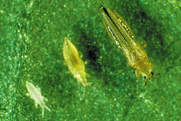
Thrips: Discolouration of plant tissue is observed. Discoloration, rolling and defoliation of leaves are observed due to thrips infestation.
If infestation is observed, spraying of 2ml/ltr of Rogor 40 EC 0.1% or Metasystox 25 EC is done after every 15 days.










